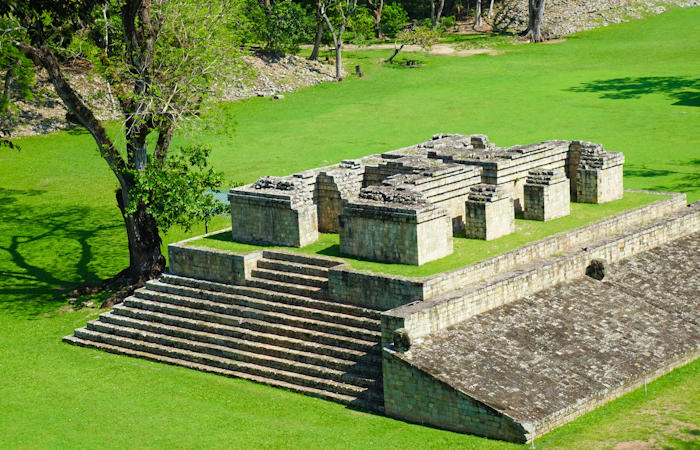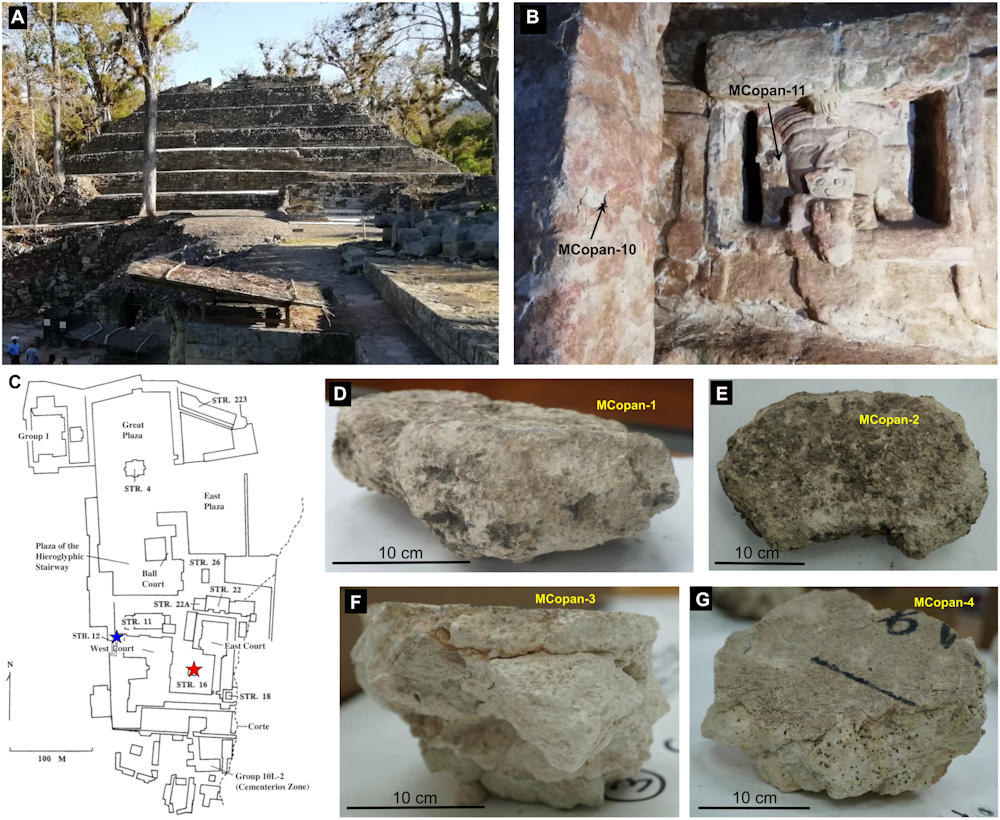Conny Waters – AncientPages.com – Ancient Maya produced some of the most durable lime plasters on Earth, yet how this was achieved remains a secret. With its magnificent structures, many of which still stand today, the ancient Maya city of Copán in western Honduras offers evidence of ancient Maya masons’ sophisticated skills.

Copán, Honduras. Credit: Adobe Stock – Jordan
It has been observed that ancient stone structures built in modern-day Honduras, for example, have lasted longer than structures built in other parts of the Aztec empire due to their durable plaster coverings.
“Much research has been dedicated to unveiling the secret that enabled Maya masons to produce these durable lime-based materials. This secret, however, remains elusive, although the beneficial use of natural organic additives has been suggested. In the Old World, plant extracts, sticky rice, fruit juices, oils, animal fats, and even blood or beer were often added to slaked lime to improve the properties of lime mortars and plasters,” the research writes in a new study published in the journal Science Advances.
To learn more about this ingenious ancient Maya technique, scientists used X-ray machines and electron microscopes to examine samples of the ancient plaster in the Copán archaeological complex and consulted with descendants of Mayans. The results of this study were a major success, and mineralogists and geologists at the University of Granada confirmed that the Maya added plant extracts to improve the plasters’ performance. Scientists found an organic material in the mix similar to a carbohydrate.
“We finally unveiled the secret of ancient Maya masons,” says Carlos Rodríguez Navarro, a mineralogist at the University of Granada in Spain and the paper’s first author.
According to researchers, ancient Maya took sap from local trees’ bark and mixed it into their plaster. This helped to reinforce the structures they built.
Producing plaster was not complicated. Ancient people took carbonate rock, such as limestone and baked it at over 1,000 degrees Fahrenheit. The next step was to mix in water the resulting quicklime and then set the concoction out to react with carbon dioxide from the air. The final product is what builders call lime plaster or lime mortar.
Lime plasters have been used for decorative and building purposes since the origin of pyrotechnology in the Levant ca. 10,000 to 12,000 B.C.
“Pre-Columbian civilizations such as the Maya independently developed lime pyrotechnology with first evidence for architectural use dating ca. 1100 BCE They produced lime plasters, mortars, and stuccoes that display an unexpectedly good state of conservation (generally lacking typical damage features such as granular disintegration, fracturing and scaling, or loss of surface relief) despite >1200-year exposure to a deleterious H๏τ and humid tropical environment,” the study explains.
The research team decided to make their own historic plaster to test their hypotheses. They produced lime mortar, mixed in sap, and then used it as a plaster.

Maya plasters from Copan archaeological site (Honduras). (A) General view of Structure 10L-16 (Late Classic building dedicated in 776 CE) (22). Within this structure is located substructure “Rosalila” (540 to 655 CE), the best example of a complete Classic temple in the Maya area, whose surface is decorated with pinkish lime plaster and stucco masks (B). Samples MCopan-10 and MCopan-11 were collected from the latter location, shown (marked with a red star) in the site map (C). Samples MCopan-1 (D) and MCopan-2 (E) corresponding to coarse lime plasters from the interior wall of the central room of Structure 12, ca. 700 CE [blue star in (C)]. Samples MCopan-3 (F) and MCopan-4 (G) corresponding to a fine two-layer plaster (“stucco”) floor from the mid-Classic (500 to 700 CE) collected in tunnel 74 at Structure 10L-16. (C) adapted from (22) with permission from Springer Nature. Credit: Science Advances (2023). DOI: 10.1126/sciadv.adf6138
“We prepared plaster replicas adding polysaccharide-rich bark extracts from Copan’s local trees following an ancient Maya building tradition,” the scientists explain. Testing showed that it had the same properties as the ancient Maya plaster, which included water solubility, making it impervious to the extreme Honduran humidity.
“It is intriguing, however, that some studied ancient Copan plasters do not include organics, while others do. We can only hypothesize that for specific purposes where a more elaborate plaster or finishing surface was required, organics were added by ancient Maya masons (e.g., in substrates for mural painting, stucco masks, or floors), whereas in coarser plaster elements, no organics were added, likely to make the process less complex and/or labor intensive,” the researchers write in their study.
Earlier this year, scientists discovered why ancient Roman concrete was so durable. Now, the research team from the University of Granada has unraveled the secrets behind ancient Maya durable plaster.
It’s a great breakthrough, and our knowledge of the ancient world keeps expanding.
The study was published in the journal Science Advances
Written by Conny Waters – AncientPages.com Staff Writer





